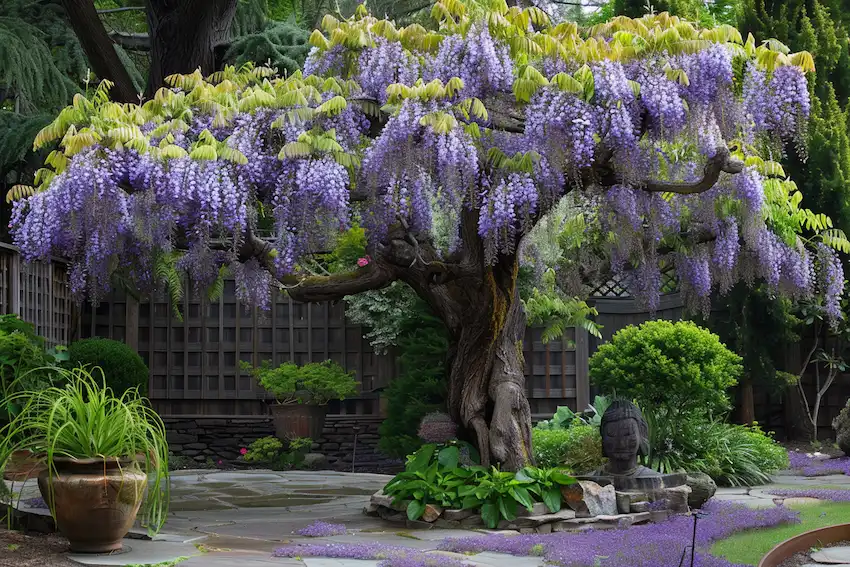Wisteria is a breathtaking addition to any garden, known for its stunning cascading blooms that create a dramatic display. However, it’s crucial for gardeners to recognize that wisteria poses significant risks if ingested. Understanding these risks and implementing safety measures is essential, especially if you have young children or pets.
Understanding Wisteria Poisoning
Toxic Components:
Wisteria contains harmful compounds, including lectins and wisterin glycosides. These toxins are most concentrated in the seeds and pods of the plant and can lead to severe gastrointestinal distress if ingested.
First Aid and Treatment
Immediate medical or veterinary attention is essential if wisteria ingestion is suspected. Activated charcoal may be administered to absorb the toxins, but do not induce vomiting unless instructed by a healthcare professional. For more information on treating plant poisonings, refer to resources like “12 Toxic Plants You Should Never Have In Your House or Yard.”
Safety Tips for Growing Wisteria
- Location Matters:
Plant wisteria in areas that are difficult for children and pets to access, such as fenced-off or elevated locations. - Regular Maintenance:
Prune wisteria regularly to remove seed pods and reduce the risk of accidental ingestion. For pruning advice, visit “10 Common Plants That Need Winter Pruning.” - Education:
Educate your family about the dangers of wisteria. Ensure that children understand not to touch or eat any part of the plant.
Companion Planting with Wisteria
Consider planting companion plants that enhance both the beauty and safety of your garden. Clematis, for example, can complement wisteria’s climbing habit and share similar care requirements. Discover more about companion plants at “Transform Your Garden: DIY Living Decorations for a Stunning Outdoor Oasis.”
Gardening in Raised Beds
Growing wisteria in raised beds is an effective way to keep the plants out of reach of children and pets while providing better control over soil conditions. Raised beds can be a safer gardening solution, especially when dealing with toxic plants.
Designing a Safe Garden
Balance aesthetics with safety when designing your garden. Use companion planting to create a harmonious ecosystem and strategically place potentially hazardous plants to minimize risks. For ideas on beautiful yet safe garden additions, explore “The 15 Most Beautiful Trees in the World.”
By taking these precautions and understanding the potential risks, you can enjoy the beauty of wisteria in your garden while keeping your loved ones safe
